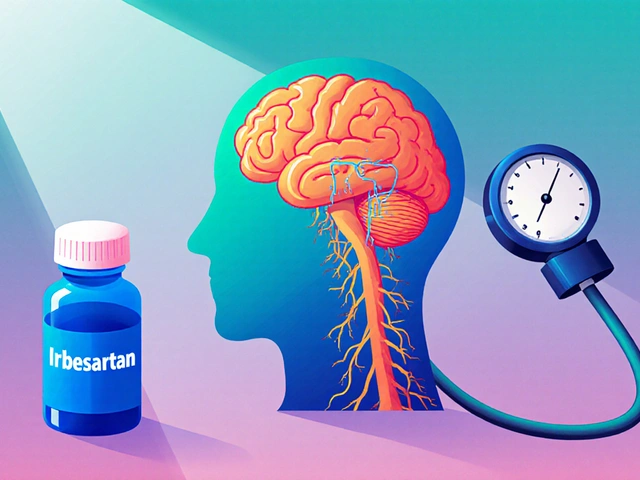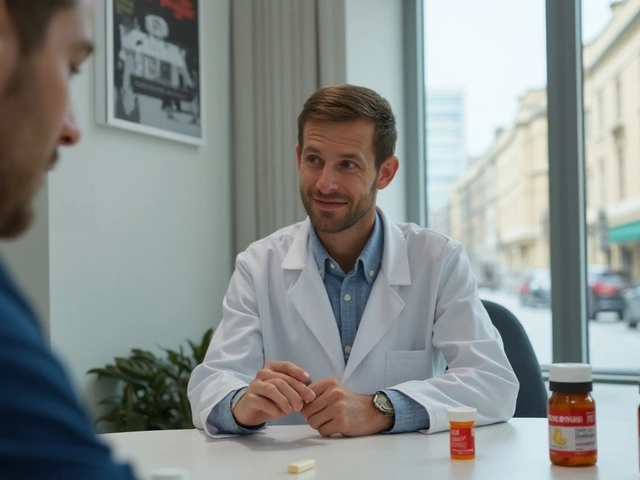Porphyria is a group of rare metabolic disorders that disrupt heme biosynthesis, the process that creates the iron‑containing pigment essential for oxygen transport and cytochrome‑P450 enzymes. When the pathway stalls, toxic porphyrin precursors build up in the liver, blood, or skin, leading to a spectrum of neuro‑visceral attacks and photosensitivity.
Why Porphyria Matters
Although each year only about 5,000 new cases are identified worldwide, the condition often goes missed because its flare‑ups mimic more common illnesses such as migraines, abdominal pain, or psychiatric disorders. Early recognition prevents dangerous complications like severe hyponatremia, liver failure, or permanent skin scarring.
Core Players in the Heme Pathway
Understanding porphyria starts with the heme biosynthesis pathway. It consists of eight enzymes, each responsible for a step that converts simple building blocks into heme. A deficiency in any of these enzymes creates a specific porphyria type.
- ALA synthase (first step)
- ALA dehydratase (second step)
- Porphobilinogen deaminase - deficit leads to Acute Intermittent Porphyria
- Uroporphyrinogen III cosynthase - deficit causes Porphyria Cutanea Tarda
- ... (remaining enzymes)
Major Types of Porphyria
There are four clinically relevant groups: acute neurovisceral, cutaneous, erythropoietic, and mixed. Below is a quick snapshot.
| Type | Enzyme Deficiency | Key Symptoms | Typical Triggers | First‑Line Treatment |
|---|---|---|---|---|
| Acute Intermittent Porphyria (AIP) | Porphobilinogen deaminase | Severe abdominal pain, neuropathy, mental changes | Hormonal swings, certain antibiotics, fasting | Hemin infusion, high‑carb diet |
| Porphyria Cutanea Tarda (PCT) | Uroporphyrinogen III cosynthase | Blistering on sun‑exposed skin, hyperpigmentation | Alcohol, iron overload, hepatitis C | Phlebotomy, low‑iron diet, chloroquine low dose |
| Erythropoietic Protoporphyria (EPP) | Ferrochelatase | Immediate burning pain after sun exposure, eye irritation | Visible light, UV‑A | Beta‑carotene, sunlight avoidance, afamelanotide (in Europe) |
| Variegate Porphyria (VP) | Protoporphyrinogen oxidase | Both neuro‑visceral attacks and photosensitivity | Similar to AIP triggers + alcohol | Hemin, avoid triggers |
How Porphyria Shows Up: Symptoms & Warning Signs
Symptoms depend on where porphyrins accumulate. Neuro‑visceral forms (AIP, VP, hereditary coproporphyryria) cause:
- Sudden, excruciating abdominal pain without a clear cause
- Peripheral neuropathy leading to tingling or weakness
- Psychiatric‑like episodes - anxiety, hallucinations, confusion
- Dark‑colored urine (often reddish‑brown) during attacks
Cutaneous forms (PCT, EPP) present with:
- Blisters or crusted lesions on hands, cheeks, or neck after light exposure
- Scarring and hyperpigmentation that can be permanent
- In EPP, painless burning that awakens within minutes of sunlight
If any of these appear after starting a new medication or during a period of intense dieting, consider a porphyria flare.
Triggers That Set Off an Attack
Most patients report a “trigger‑response” pattern. Common culprits include:
- Certain drugs - barbiturates, sulfonamides, anti‑epileptics, and some antibiotics are known porphyrin‑inducing agents.
- Hormonal fluctuations - especially estrogen‑rich oral contraceptives or hormone replacement therapy.
- Fasting or extreme low‑carb diets - they push the liver to up‑regulate ALA synthase.
- Alcohol intake - amplifies liver stress and iron overload, particularly in PCT.
- Infections and stress - raise cortisol, which can destabilize the heme pathway.
Identifying personal triggers is a cornerstone of long‑term management.

Diagnosing Porphyria: Tests & Genetic Insight
Because symptoms overlap with many other conditions, a stepwise approach is essential.
- Urine porphyrin test: Collect a 24‑hour dark‑protected sample. Elevated porphobilinogen (PBG) and δ‑aminolevulinic acid (ALA) point to an acute attack.
- Blood plasma porphyrins: Helpful for distinguishing cutaneous vs. erythropoietic types.
- Fecal porphyrin analysis: Often elevated in VP and hereditary coproporphyria.
- Genetic testing: Sequencing of the relevant enzyme genes confirms diagnosis and guides family screening.
Reference labs such as the National Porphyria Reference Center (US) and European Porphyria Network provide standardized assays.
Treatment Options Tailored to Type
Therapy splits into acute‑attack management and chronic‑care strategies.
Acute Attacks
- Hemin infusion (Panhematin®) - delivers heme, down‑regulating ALA synthase and halting the toxic cascade. Typical dose: 3‑4 mg/kg daily for up to 4 days.
- High‑carbohydrate loading (10% dextrose IV) - a cheaper, short‑term alternative when hemin is unavailable.
- Symptom control: anti‑nausea meds, analgesics (avoid opioids that can worsen constipation).
Chronic Management
- Trigger avoidance - maintain a medication list vetted by a porphyria‑aware pharmacist.
- Dietary adjustments - moderate protein, maintain carbohydrate intake > 60% of calories, avoid prolonged fasting.
- For PCT: regular phlebotomy (500ml weekly) until ferritin < 20ng/mL.
- Low‑dose chloroquine (125mg weekly) can mobilize skin porphyrins in PCT.
- EPP patients benefit from beta‑carotene (30-60mg/day) and, where approved, afamelanotide implants.
Emerging therapies include givosiran (siRNA) targeting ALA synthase, showing promise in reducing attack frequency for AIP patients.
Living With Porphyria: Practical Tips
- Carry a medical alert card describing the specific porphyria type and emergency treatment (hemin).
- Keep a symptom diary to link triggers with flare‑ups; share it with your physician.
- Stay up‑to‑date on vaccine recommendations-some live vaccines can precipitate attacks in rare cases.
- Consider genetic counseling for family planning; a 50% inheritance risk exists for autosomal‑dominant forms.
- Join patient support groups (e.g., American Porphyria Foundation) for coping strategies and latest research news.
Future Directions & Research
Clinical trials in 2025 focus on gene‑editing approaches (CRISPR‑Cas9) to correct the underlying enzyme defect. Parallel studies assess long‑acting hemin analogues that could be administered subcutaneously once a month, reducing hospital visits.
Researchers also explore the link between chronic porphyrin exposure and hepatocellular carcinoma, especially in PCT patients with iron overload. Regular liver imaging is now advised after ten years of uncontrolled disease.
Frequently Asked Questions
Can diet alone prevent porphyria attacks?
A balanced diet rich in carbohydrates helps keep ALA synthase activity low, but it won’t replace medical therapy. Patients should avoid prolonged fasting and maintain regular meals, especially during high‑stress periods.
Is porphyria hereditary?
Most forms are autosomal‑dominant, meaning a 50% chance of passing the faulty gene to each child. Some rare types follow an autosomal‑recessive pattern. Genetic testing clarifies inheritance risk.
What should I do if I notice dark urine during an attack?
Collect a urine sample in a dark container and contact your healthcare provider immediately. Prompt hemin infusion can stop the attack and prevent complications.
Are over‑the‑counter pain relievers safe?
Acetaminophen is generally safe. NSAIDs like ibuprofen can be used cautiously, but avoid aspirin and certain COX‑2 inhibitors that may exacerbate the condition.
How often should I get screened for liver cancer?
For PCT patients with iron overload or a history of hepatitis C, liver ultrasound or MRI every 6‑12 months is recommended after ten years of disease activity.
Can pregnancy trigger porphyria attacks?
Hormonal changes during pregnancy can provoke attacks, especially in AIP. Close monitoring, safe medication lists, and prophylactic hemin if needed are essential.







rafaat pronoy
September 24, 2025 AT 18:53